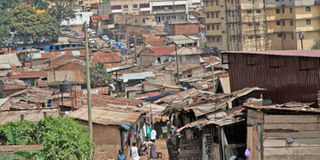Rich, poor gap widens - report

What you need to know:
The report indicates that poverty levels are more acute in the north and eastern Uganda.
Despite a drop in the percentage of Ugandans living in poverty by two percentage points, the gap between the rich and poor continues to widen, according to a new report.
The Uganda National Household Survey, spearheaded by the Uganda Bureau of Statistics indicates that poverty in the country reduced to 22 per cent in 2012/13 from 24.5 per cent in 2009/10 while income inequality increased to 43.1 per cent from 42.6 per cent.
The report also indicates that a number of poor Ugandans have become poorer, while the rich continue to stash away more cash and properties.
“We are observing that the percentage of poor people is going down but the distribution of income is worsening,” Mr James Muwonge, the director socio-economic surveys, Ubos said while presenting the report in Kampala yesterday.
He attributed the general fall in poverty to a decline in the number of the rural poor, dropping from 27.2 per cent to 25.4 per cent due to improved agricultural output.
The report, however, indicates that urban areas registered a surge in poverty numbers from 9.1 per cent to 10.5 per cent.
This was attributed to the high cost of living as urban dwellers continue to grapple with residual effects of the 2011 economic challenges.
The report, the fifth in the series of surveys, covered 6,810 households spanning a period between July 2012 and June 2013. It measured household poverty status basing on basic expenditures.
A household was considered poor if its consumption expenditure per adult was below the minimum income to meet basic needs such as food and non-food items.
Mr Vincent Ssennono, the Ubos principal statistician, said the number of working poor persons reduced from 2.5 million to 2.3 million in 2009/10 and 2012/13, respectively.
Such persons are classified under the working labour force but their incomes fall below the $1 per day [about Shs2,500].
Majority of the working poor are employed in agriculture, at 23 per cent, followed by production [ 15 per cent] and services [7 per cent].
Dr Patrick Wakida, the Research World International chief executive, said poverty should be measured based on how the income inequality gap has been closed rather than basing on parameters like having a meal a day.
Reviewing the poverty line
Dr Sarah Ssewanyana, the executive director Economic Policy Research Center recently said the government should review the current poverty line of $1 per day upwards due to changes in the country’s economic dynamics
The findings also indicate that poverty remains acute in the north and eastern parts of Uganda, with the proportion of the poor standing at 49 per cent and 27.7 per cent respectively, compared to 9.2 per cent in the west and 5.2 per cent the central region.
Despite a reduction in the percentage of poor people to 22 per cent, the real numbers show that the number of poor persons remained unchanged at 7.5 million people, as was the case in 2009/10.
Uganda’s population is currently estimated at 33.9 million people.




